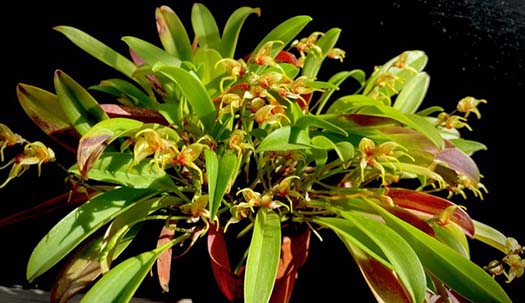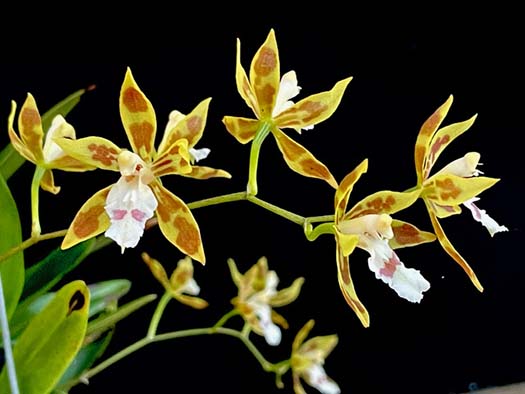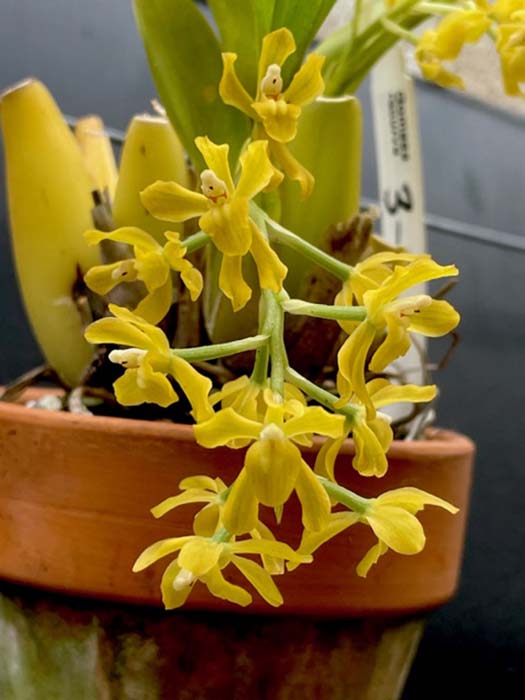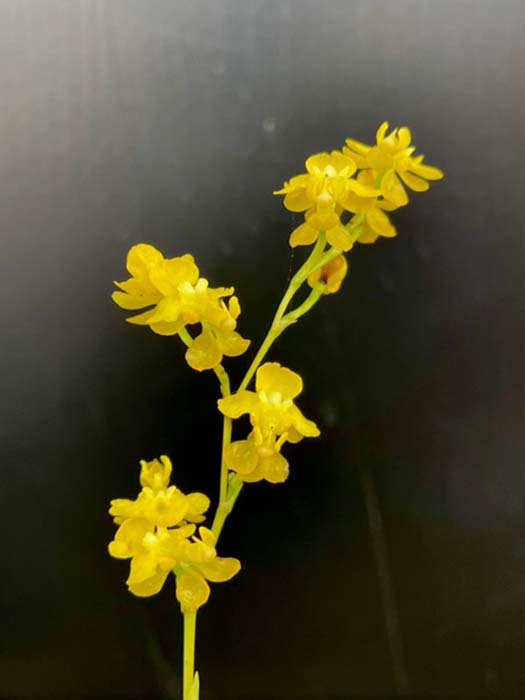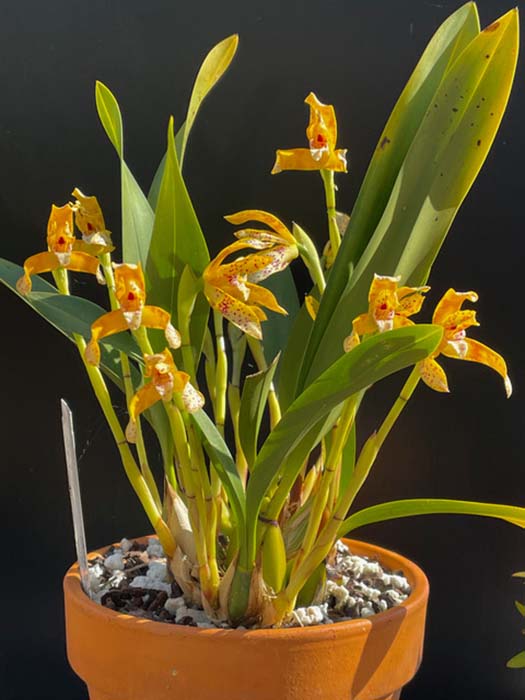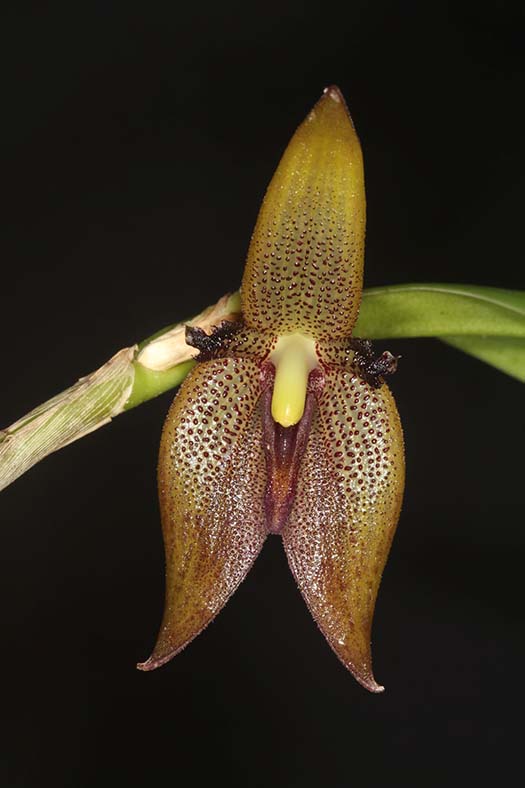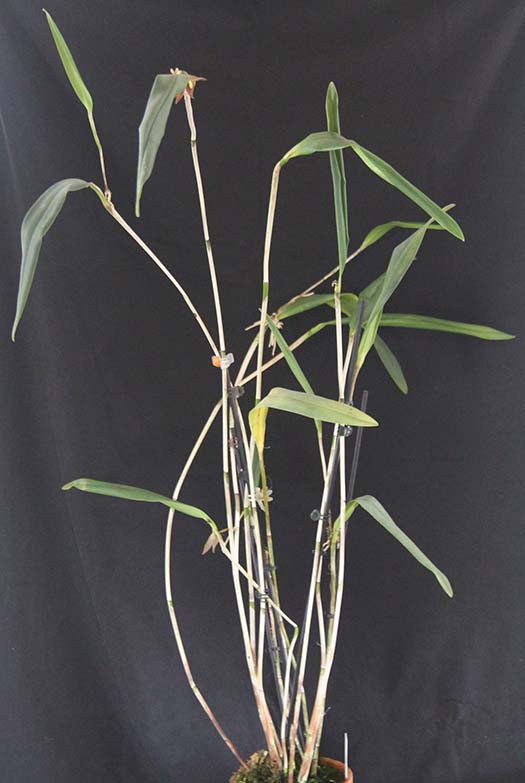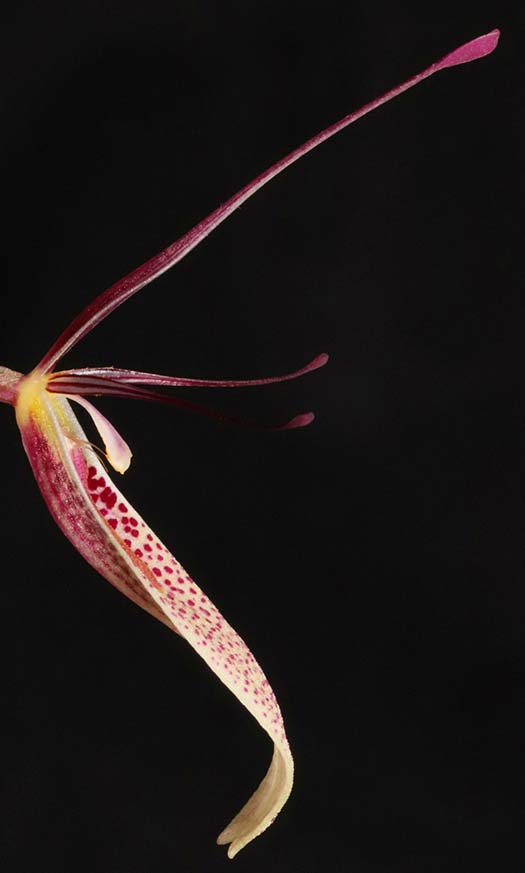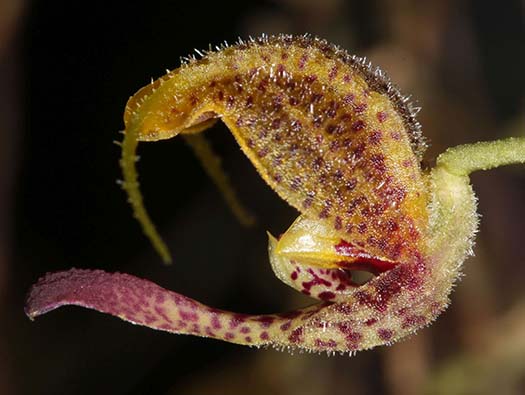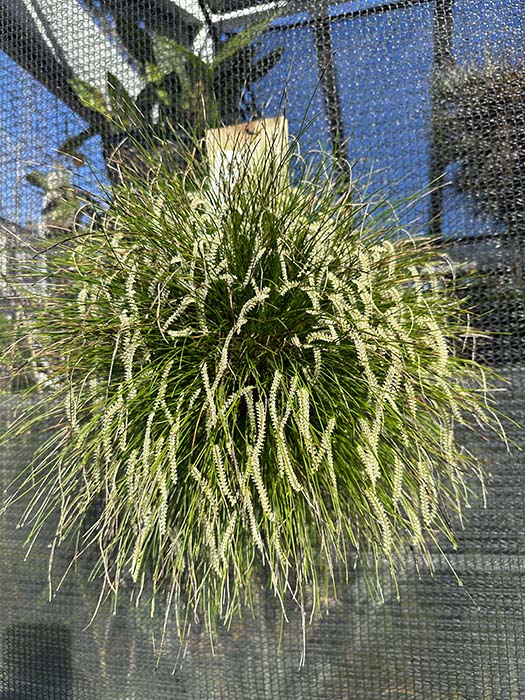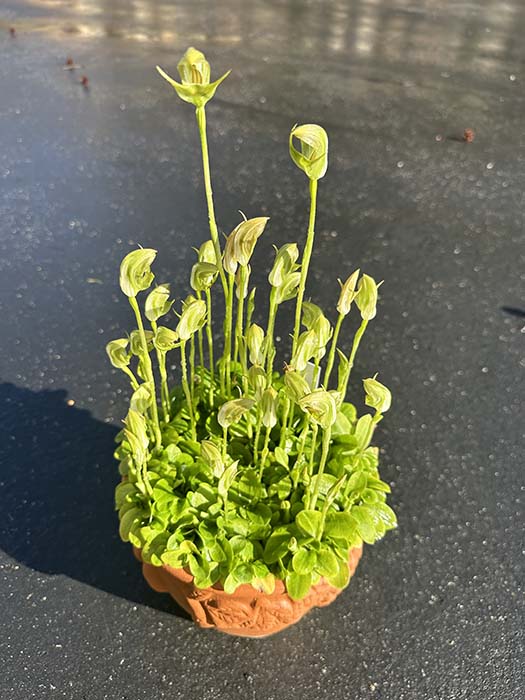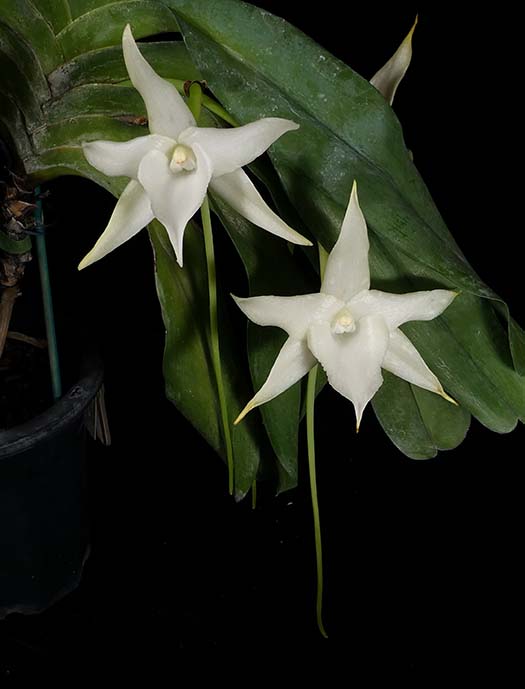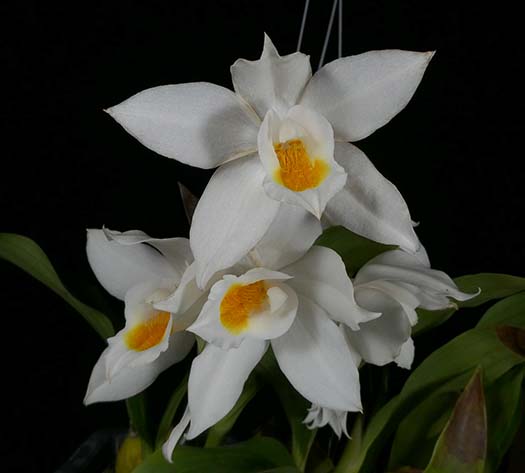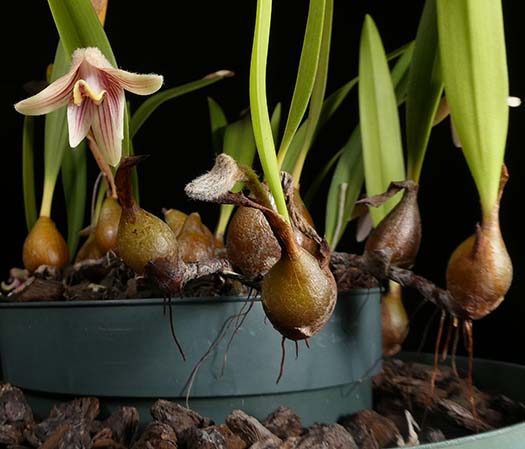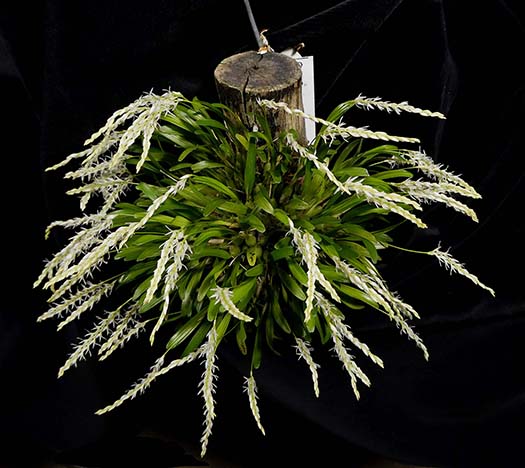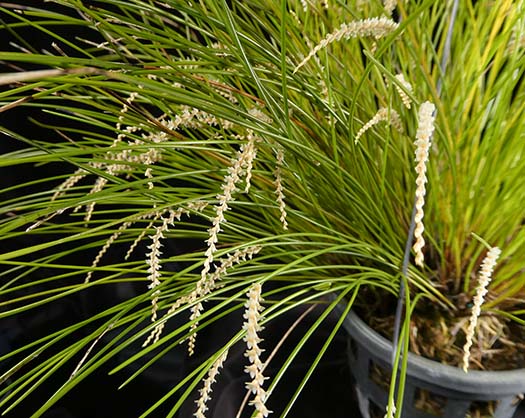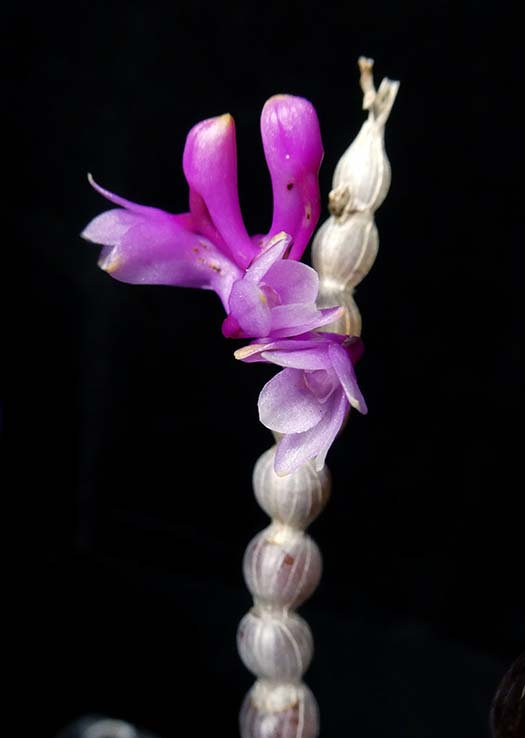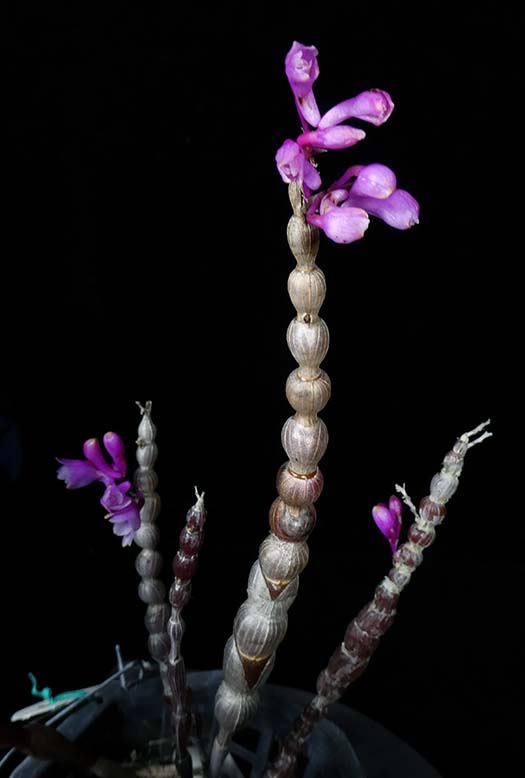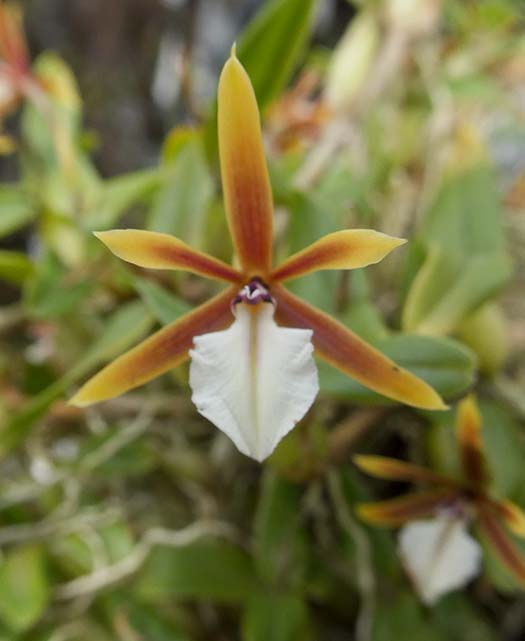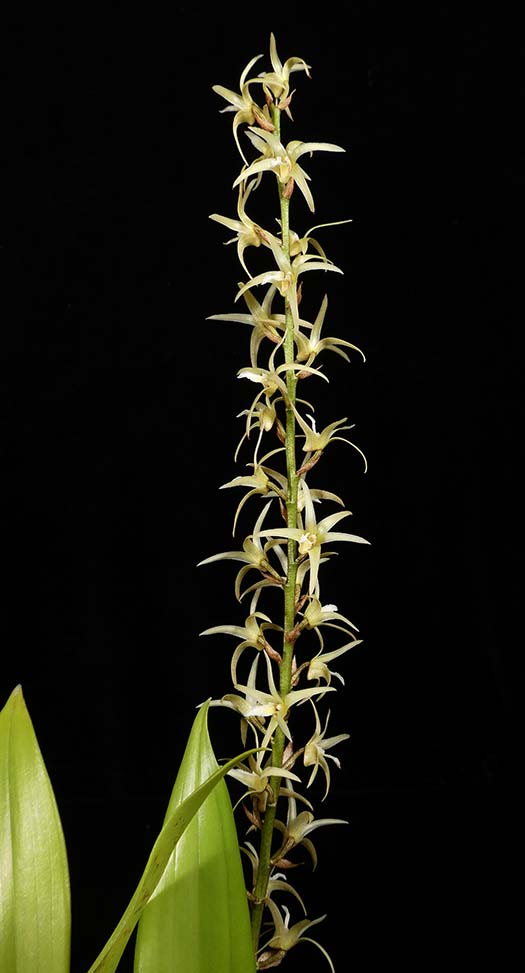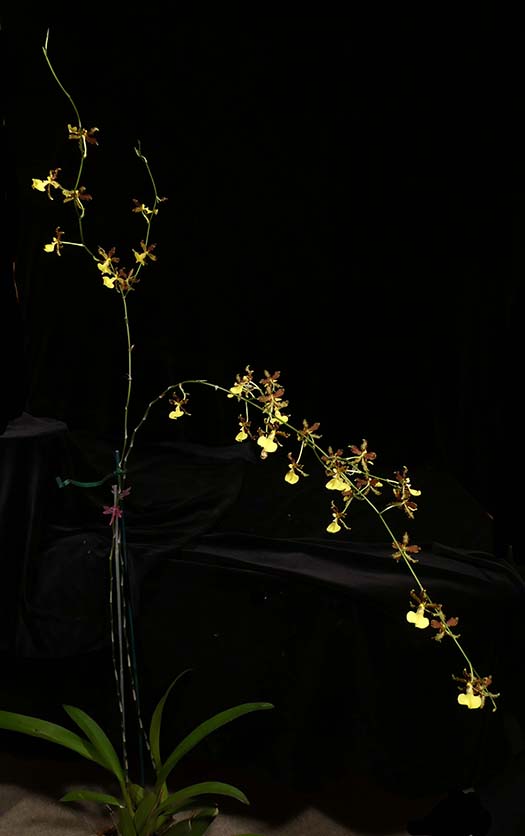March 2023
From Kurt Shanebeck:
|
|
Outdoors coastal, north of Los Angeles: |
|
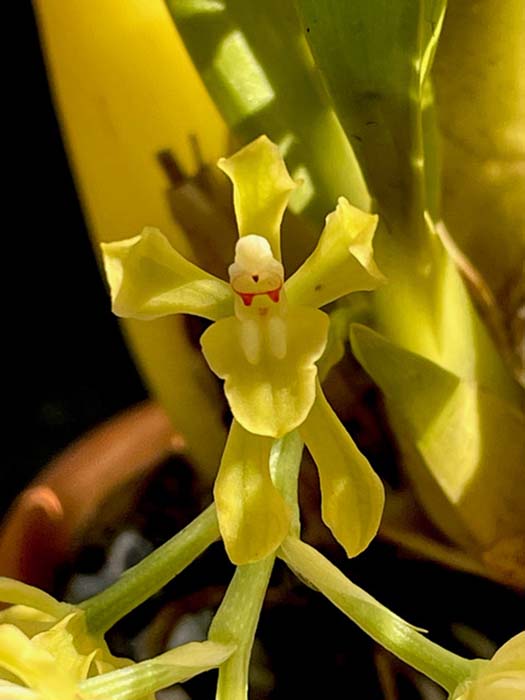 |
|
Gomesa recurvaBrazilian species growing potted in bark with partial shade. |
|
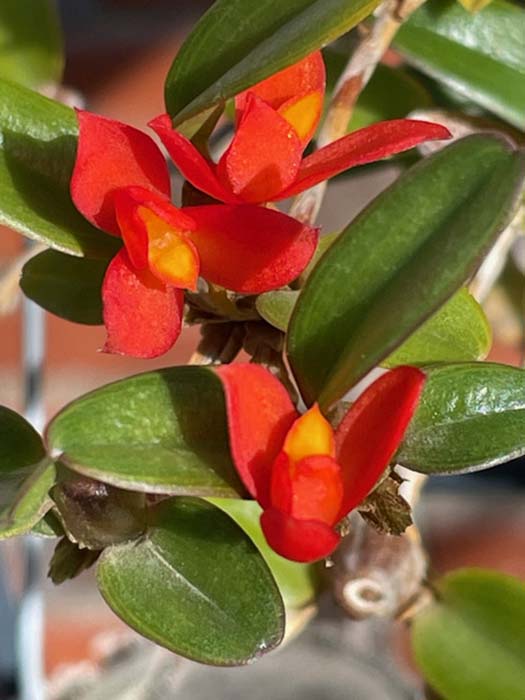
Maxillaria sophronitisGrowing mounted with bright light. |
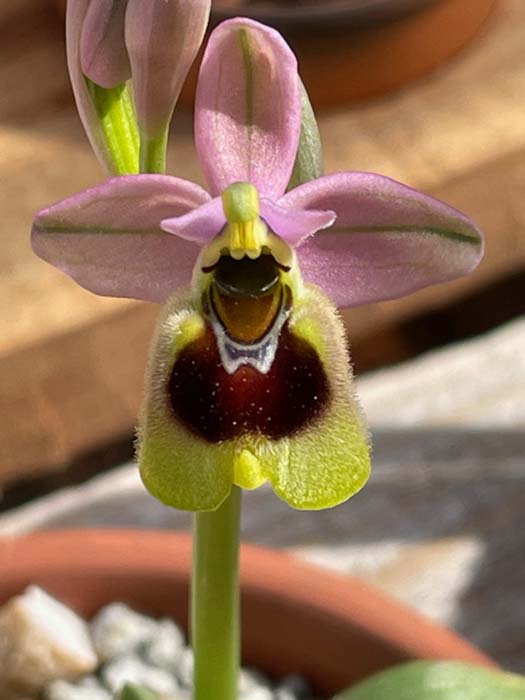
Ophrys tenthrediniferaMediterranean terrestrial species. Growing potted in pumice with ~20% coconut coir and some travertine. |
From Chris Ehrler:
|
|
Coastal, California Central Coast |
|
 |
|
Myoxanthys serripetalus 'Chris' AM/AOSA cool to cold growing terrestrial or epiphyte found in Peru and Ecuador on the eastern Andes at elevations of 1000 to 3100 meters. This plant is about 3 feet tall and produces flowers throughout the year. This orchid is growing in a clay pot filled with moss and placed in a cool greenhouse. But some keikeis from this orchid are growing well outside in a clay pot filled with moss. |
|
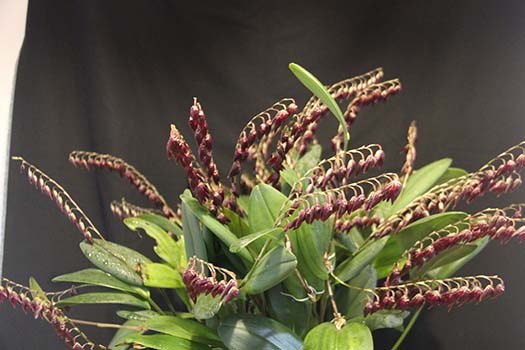 |
|
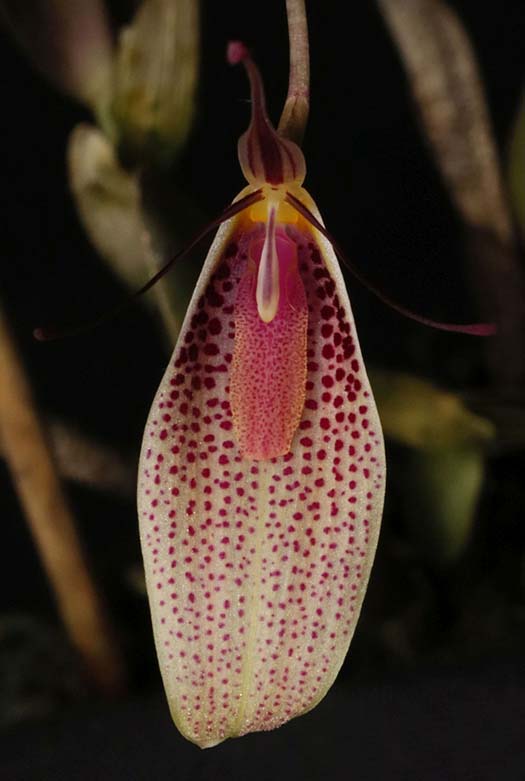
Restrepia chameleonA cool growing epiphyte found in Norte de Santander Colombia at an elevation around 2700 meters. This orchid is growing in a cool greenhouse in a clay pot filled with sphagnum moss. |
|
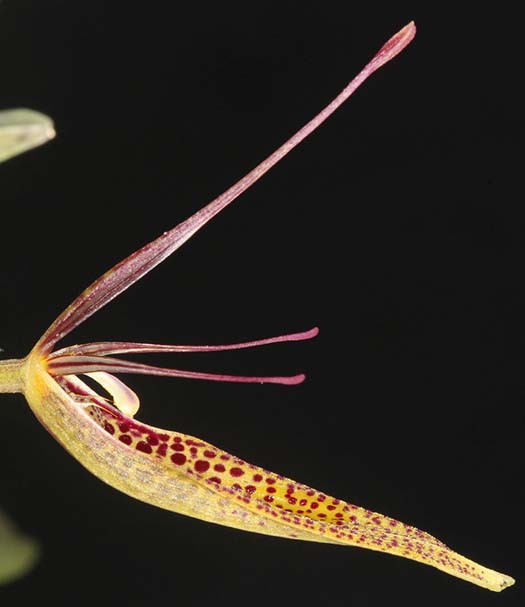 Restrepia guttulata yellow flower formA cold to cool growing epiphyte found in Colombia, Ecuador, Peru and Venezuela at elevations of 1700 to 3000 meters. This orchid is growing in a cool greenhouse in a clay pot filled with sphagnum moss. |
|
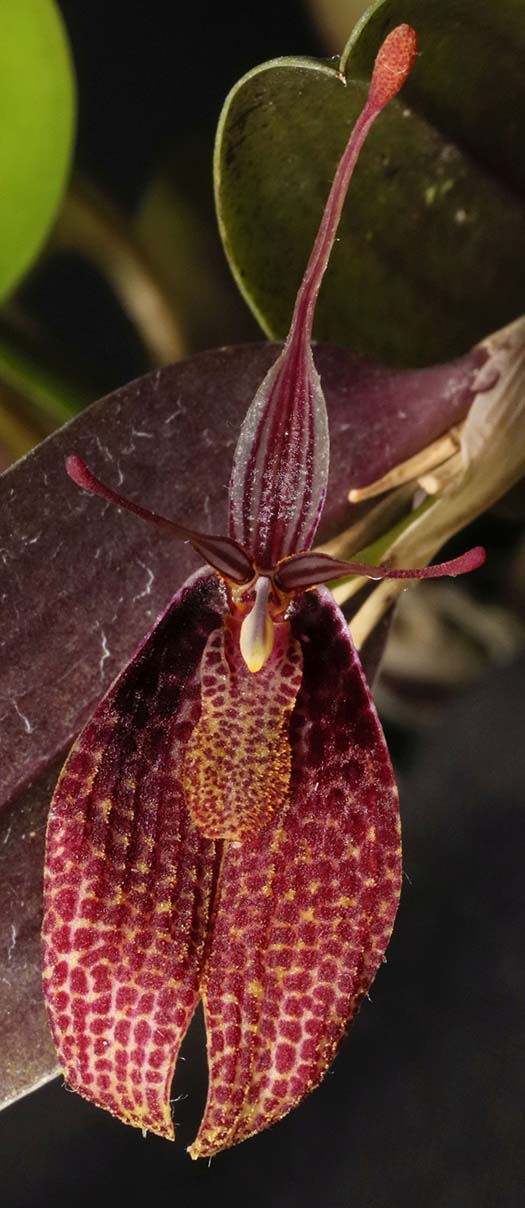 Restrepia guttulata red flower form |
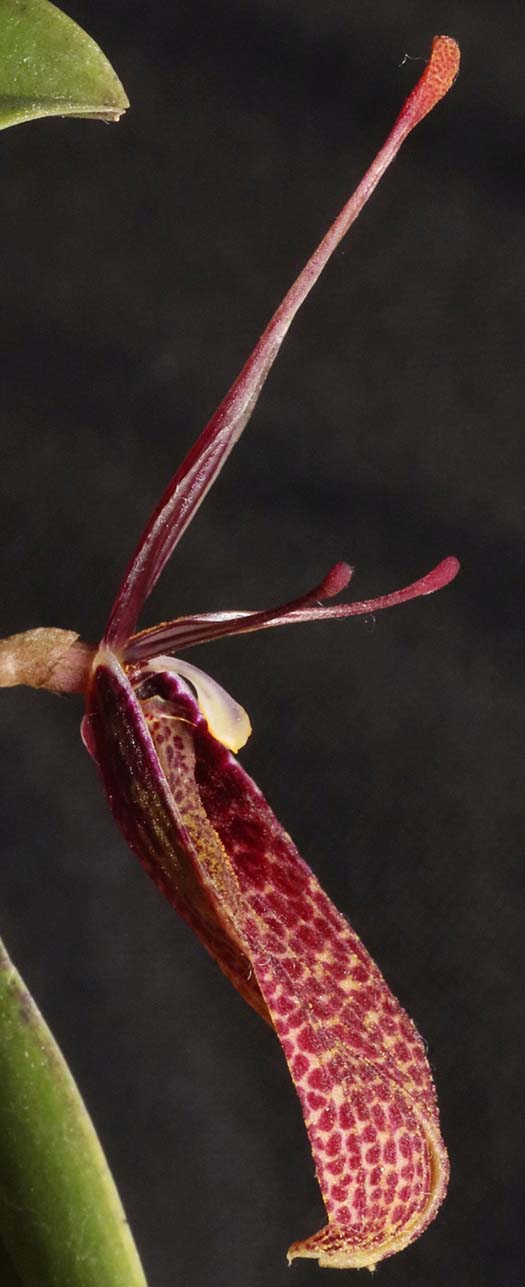 |
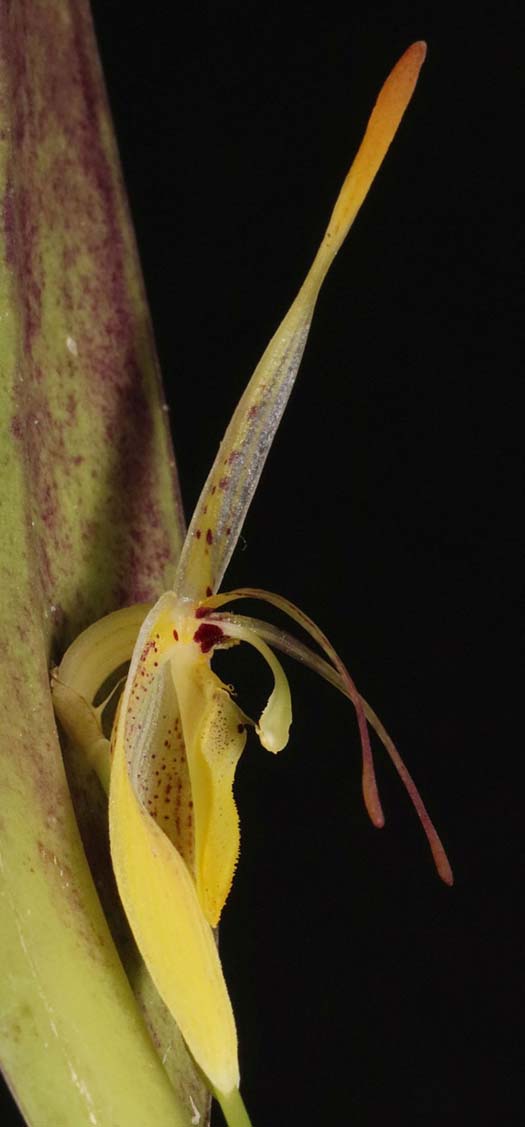
Restrepia mendozaeNative to southeastern Ecuador in the Cordillera del Condor at elevations around 1500 meters as a small sized, warm growing epiphyte. But this plant is growing well in a cool greenhouse. It is planted in sphagnum moss in a clay pot. |
 |
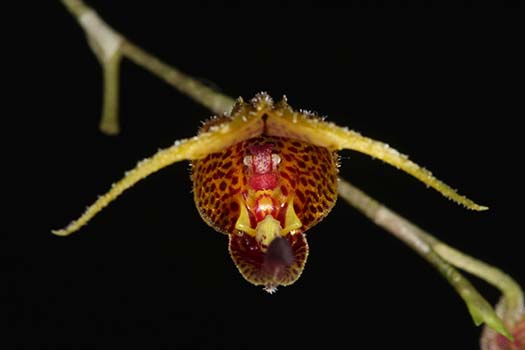 |
|
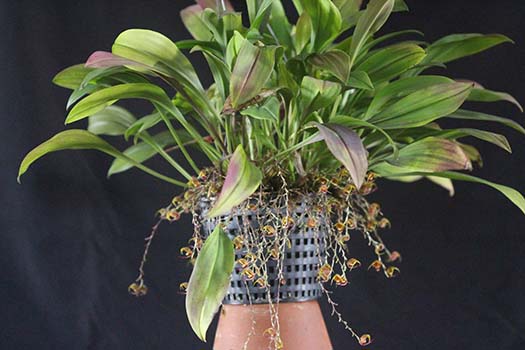 |
|

Stelis eublepharis (or not...)Label states this is Stelis eublepharis but it does not match the photos in orchidspecies.com. Stelis eublepharis is native to Colombia, Ecuador, Peru and northwestern Venezuela as a cool growing epiphyte growing at elevations around 2100. This orchid is goring in a cool greenhouse in a clay pot filled with sphagnum moss. The photos of this species in orchidspecies.com show the cilia on the petals and sepals being longer, the sepals being more pointed, and the petals being different. So, the label probably should just be Stelis spp. |
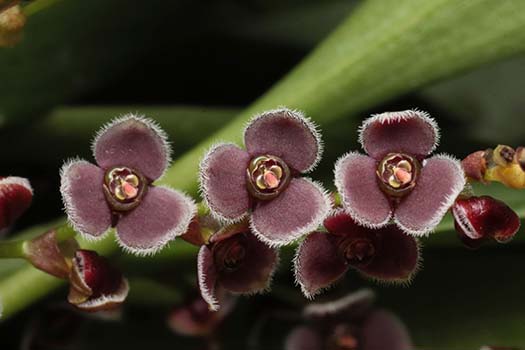 |
From Scott McGregor:All orchids grown outdoors, coastal southern California |
|
Isabelia violaceaBrightly saturated flowers on this mini Cattleya relative. Grows bright and cool and best mounted. |
|

Satyrium corifoliumFrom South Africa’s Southwest coast, which has a Mediterranean climate so grows with my other Med orchids. Seems easy to grow and I have more plants than I started with. I’ll take another pic next month when fully open. |
|
From Roberta Fox:
|
|
Outside in the Back Yard: |
|

Maxillaria sophronitisOne more time... I showed you a flush bloom last month, and it is still going strong at the end of February. This spectacular bloom started in mid December, and new flowers appear as old ones fade. It is slowing down a little, but this is the longest flush bloom I have seen from this beautiful plant. |
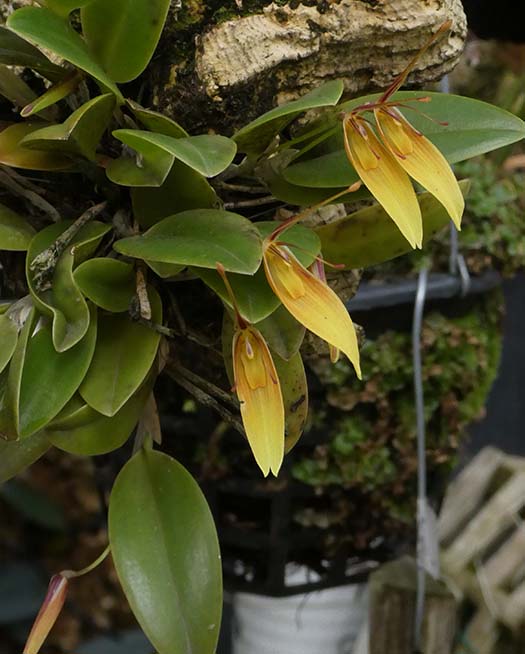
Restrepia jesupianumAnother reprise... last month just 2 flowers, now has 5 or 6 open at once, a first for this plant. |
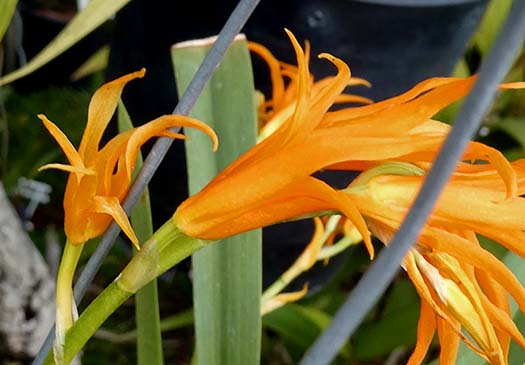
Brassia (Ada) aurantiacaNative to Ecuador, Colombia, Venezuela at elevation 2000-2500 m. The flowers don't open completely, but look a bit like flames. This year, 12 spikes. |
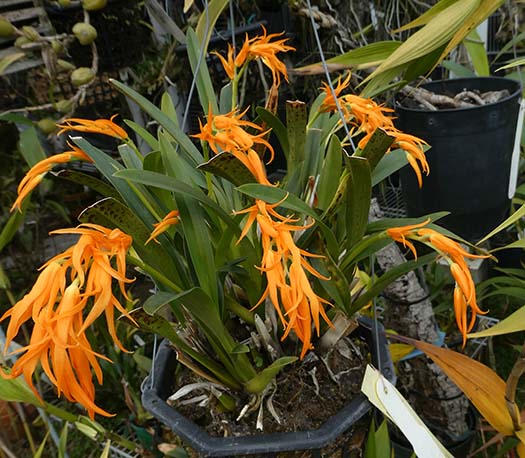 |
 Bonatea speciosaA South African terrestrial, that grows easily in well-drained soil, with high light. |
 |
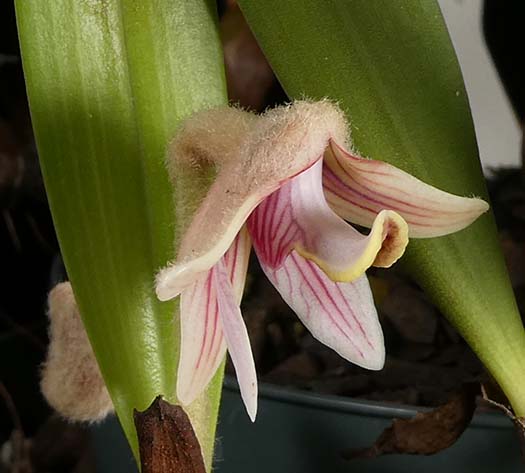 |
|
 |
|
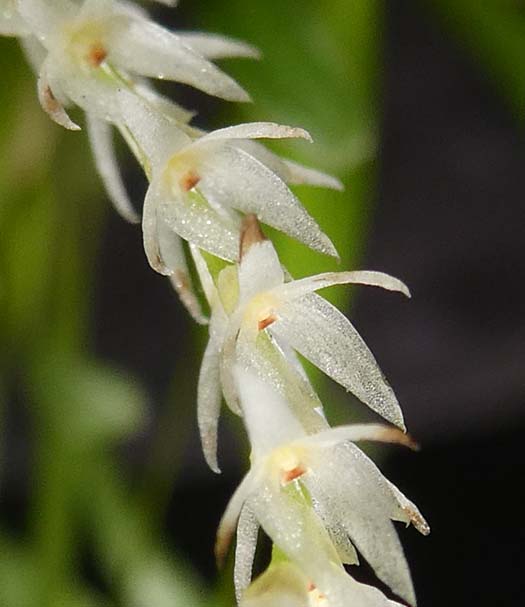 |
|
 |
|
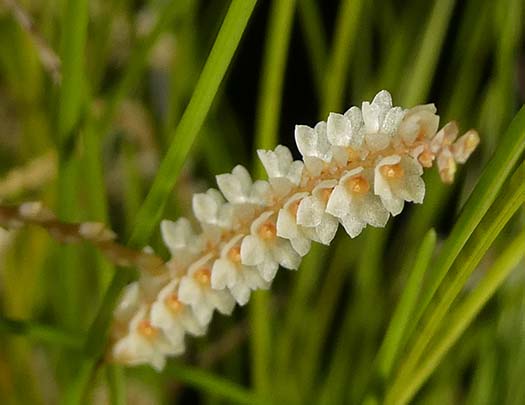 |
|
Dendrochilum tenellumYou saw Scott's magnificent specimen. Here is a close-up of my plant. Hundreds of tiny flowers. |
|
Dendrobium rindjanienseNative to the Sunda Islands of Indonesia, elevation 1925-2000 m. It blooms on the intriguing, bumpy bare canes. A cane can bloom multiple times. This is the best blooming that i have had from it so far, apparently it likes the rain. This is the first time that it has bloomed on multiple canes. |
|
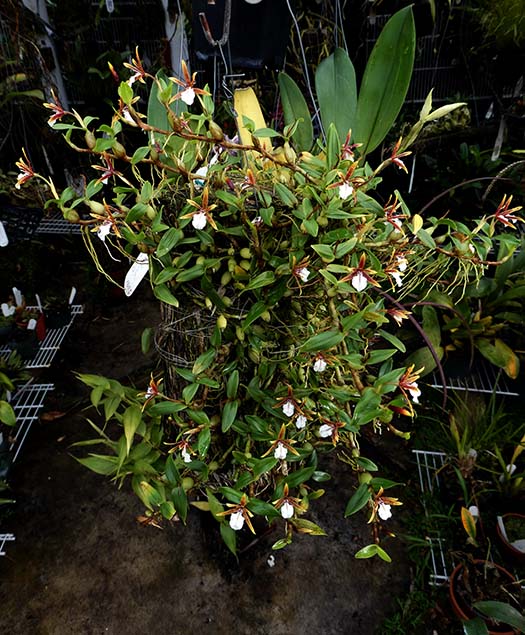 |
|
Dinema polybulbonThis Encyclia relative has a creeping habit. It is surrounding its mount, and also growing out into the air. Native to Mexico and much of Central America, elevations 600-2000 m. |
|
 |
|
 |
|
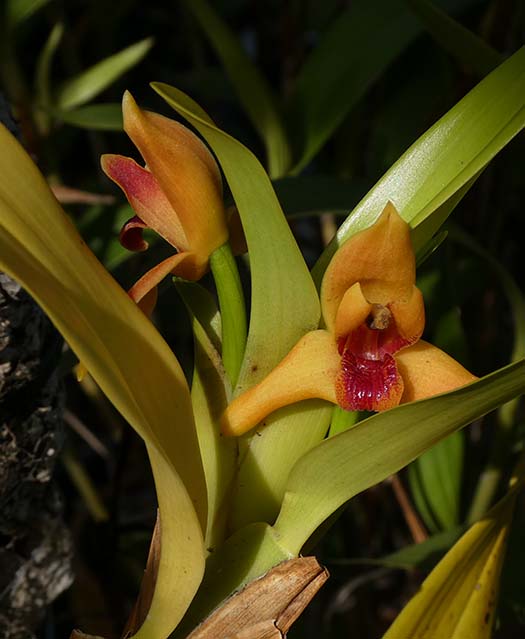 |
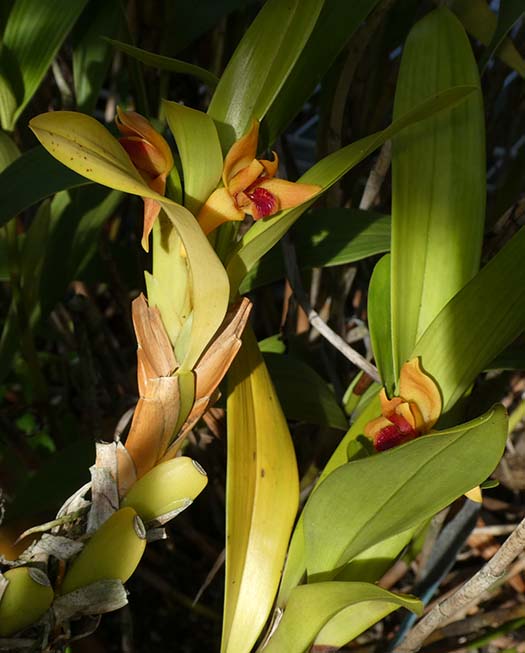 |
Maxillaria elatiorFlowers emerge from between the leaves. They have heavy substance, and are long-lasting. New ones emerge as old ones fade, so the plant stays in bloom for two months or so, and can bloom twice a year or more. Native to Mexico and much of Central America, elevations 400-1500 m. |
|

Mediocalcar decoratumA mat-forming growth pattern, it grows more ON than IN the basket, and is slowly forming a ball whick is covered in these little candy-corn flowers. Native to New Guinea. |
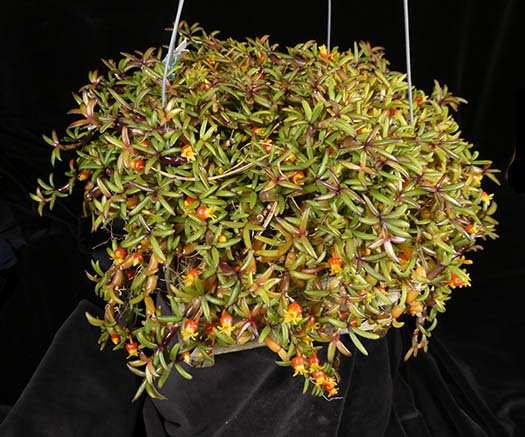 |
 |
|

Ophrys tenthrediniferaMediterranean terrestrials are starting their show. I use a mix of about 80% pumice and 20% organic (well-drained potting soil such as cactus mix, and some small bark). I also include a top dressing of a few marble chips, for very light time-release alkalinity since these tend to grow in calcareous soils. Once they go dormant, they get no water until around mid-October. |
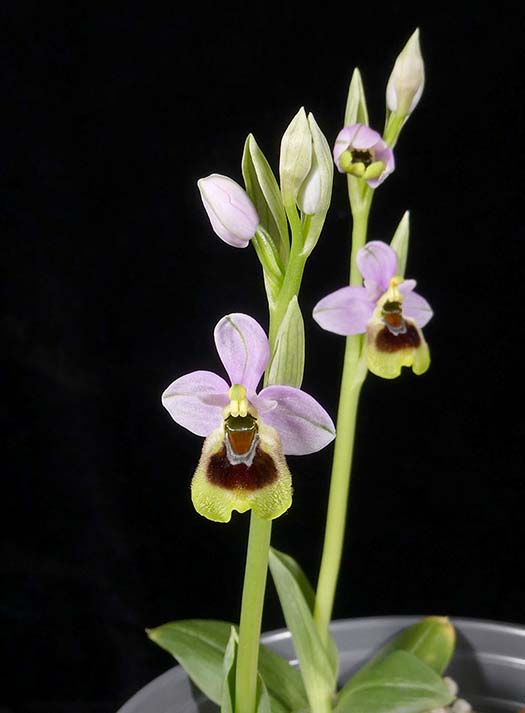 |
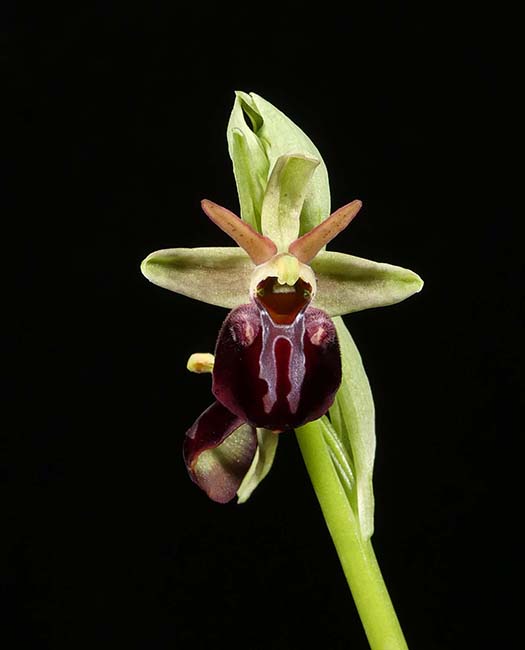 |
 |
Ophrys sphegodesA species group with lots of subspecies and taxonomic confusion. |
|
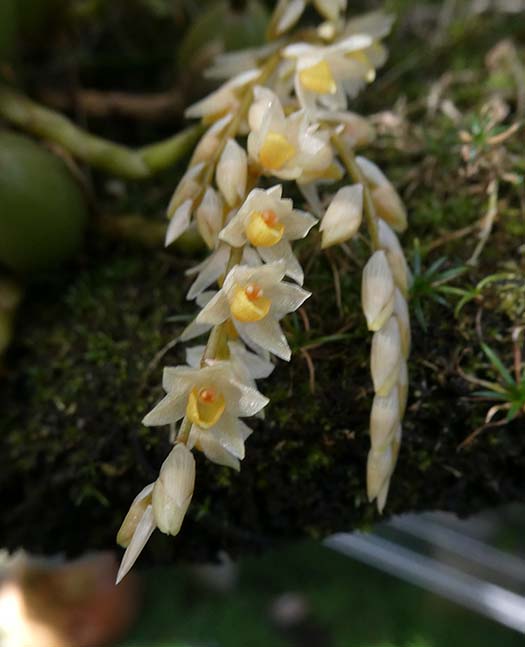
Pholidota cantonensisThis one is now Coelogyne (along with all the Dendrochilums) It's a very floriforous plant with a creeping habit. It seems to be doing very well on a hapu'u slab, held horizontaly. It is native to Taiwan, and several provinces of mainland China, at elevations from 300-2000 m. |
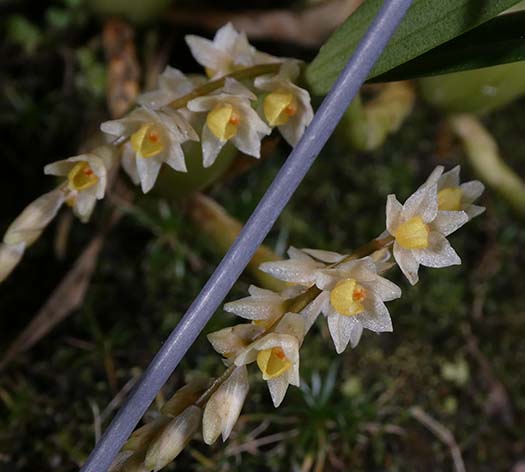 |
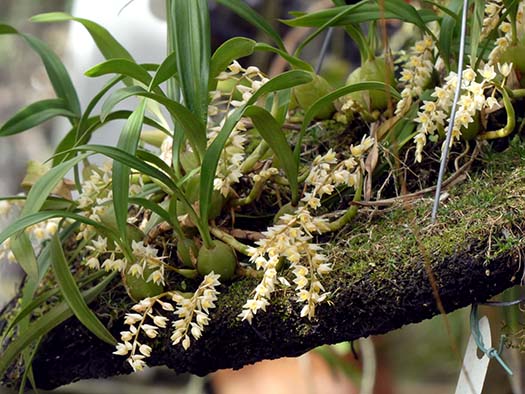 |
|
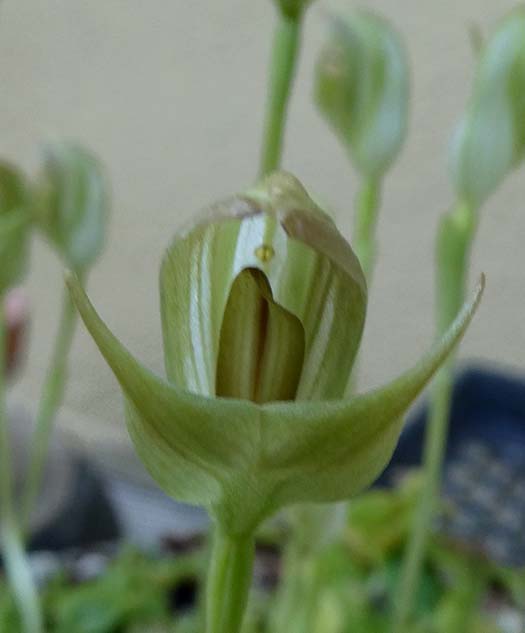
Pterostylis curtaThis faithfully blooms every year, running a little late this year. The number of tubers approximately doubles each year. (I share...) The medium is about 60% inorganic and 40% organic. It dies back after blooming, and I pretty much stop watering (but don't dry it as severely as the Mediterranean terrestrials) In mid-July I gather the tubers and repot, resume watering in early August. |
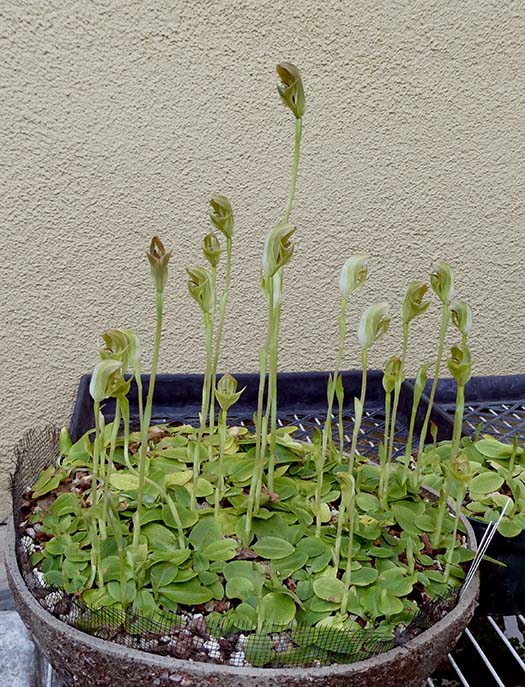 |
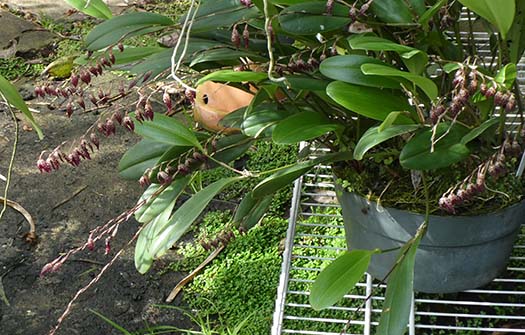
Pleurothallis restrepioidesThe "Restrepia-like Pleurothallis". It produces keikis, which in turn bloom. So it tends to be a bit unruly, but is very reliable. The red spots on the flowers tend to be iridescent, photos don't do them justice. |
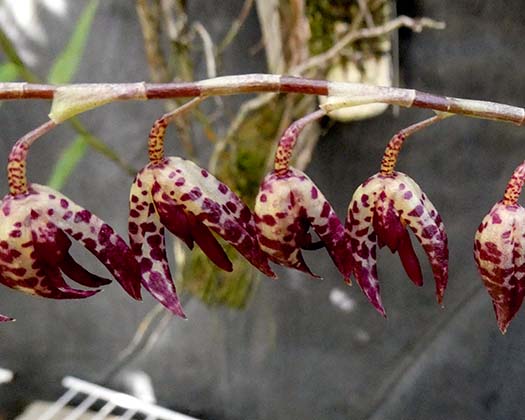 |

Trichocentrum (Oncidium) cavendishianumNative to Mexico and Guatemala, at elevations from 1500-2000 m. It is one of the "mule-ear" Oncidiums, unusual in that most of this group are from more tropical areas. It grows very slowly and is a very shy bloomer. I had it for 14 years before it bloomed, it then bloomed the following year. It badly needed repotting but didn't like that either... it has been a 9-year wait to see it bloom again. Fortunately, the flowers are fairly long-lasting. My mantra is "Orchids teach patience" but this one pushes the boundries. It is a fairly small plant, so doesn't take a lot of room while I'm waiting for it. |
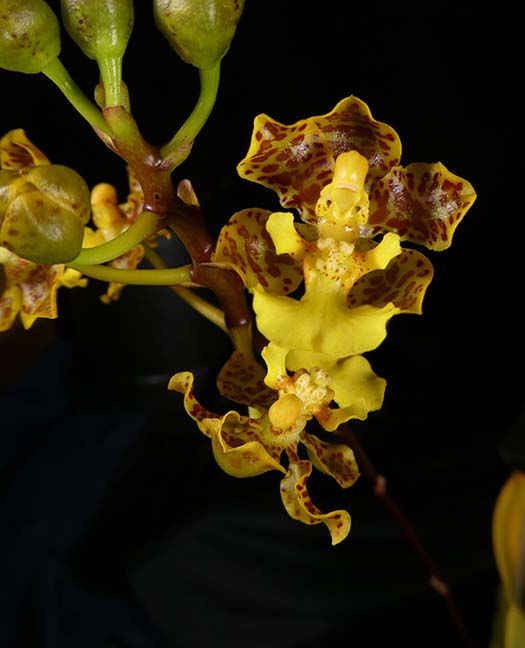 |
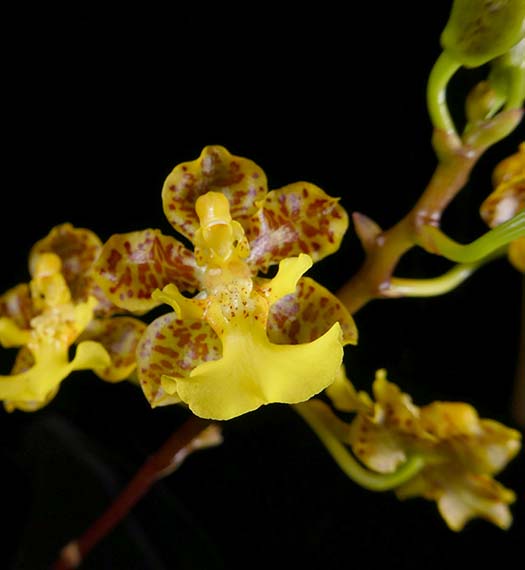 |
|
In the greenhouse... |
|
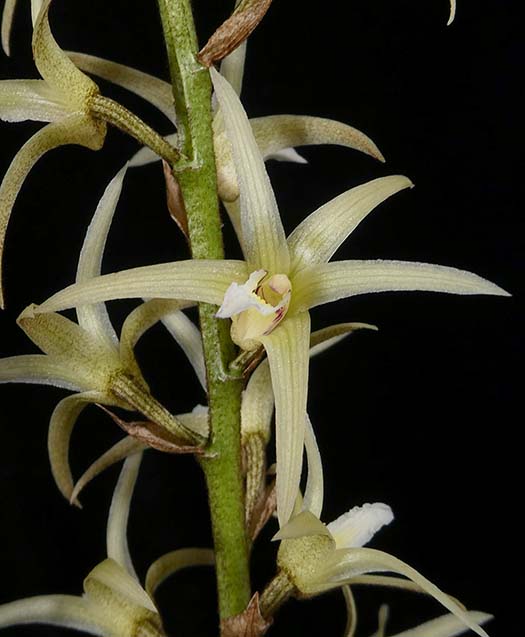 Eria javanicaAs the name implies, it's native to Java, as well as surrounding islands, and as far north and east as Taiwan and southern Yunnan provice in China, at elevations ranging from 300-1300 m. I have been growing it in the greenhouse, but given its range, its size and rambling growth habit, I think it's going to move outside as soon as temperatures rise a bit. |
|
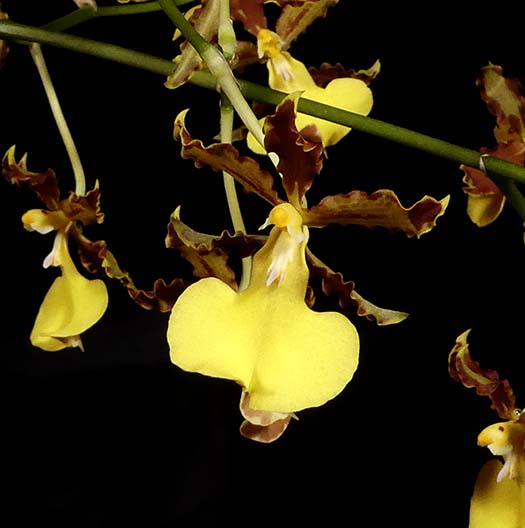 Oncidium hyphaematicumNative to Colombia, Ecuador, and Peru at elevations mostly under 1000 m. The relatively large (about 1 inch) , and very attractive, flowers are arrayed on spikes that are 5-6 feet long. I grow it outside much of the time, but since it spikes in the late fall, blooms in winter, I do try to protect it, especially in winters as cold as this one. But it's tight in the greenouse, as soon as it blooms I move it into the house to enjoy it - and to give the flowers a little space. |
|
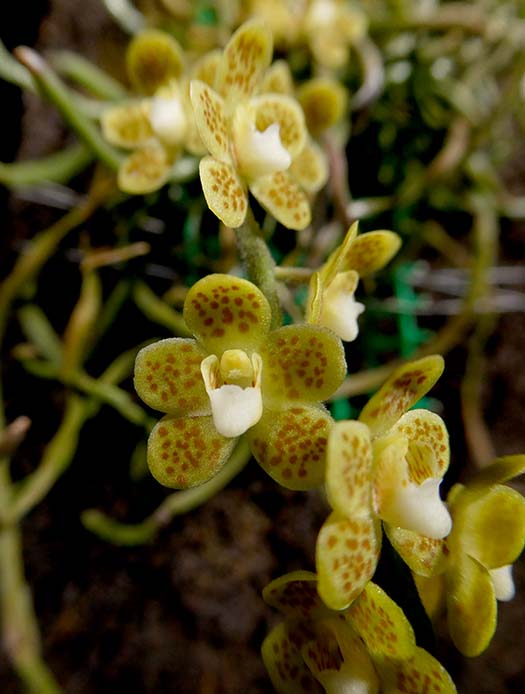
Chiloschista sweelimiiNative to peninsular Malaya, at low elevations. It is a leafless orchid, doing its photosynthesis through its roots. |
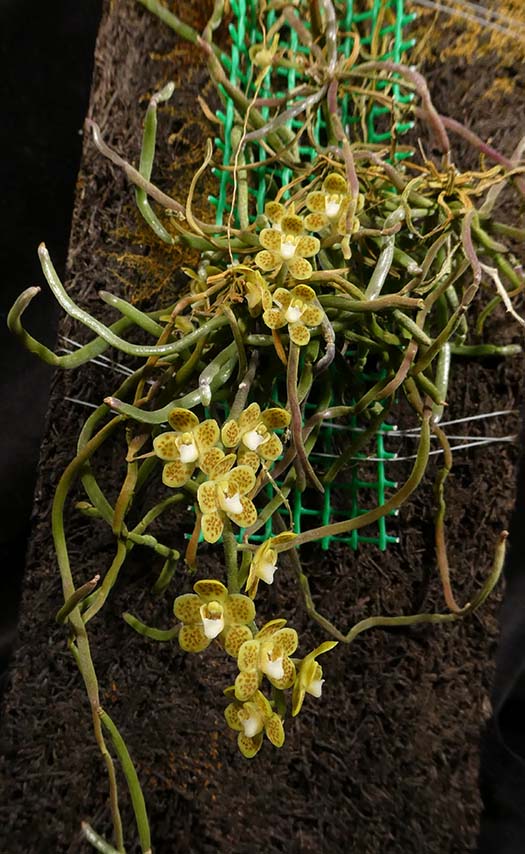 |
 |
|
Phalaenopsis schillerianaThis Phal schlleriana is either confused, or just multi-tasking. It started to produce what looked like spikes, which then sprouted leaves. OK, maybe I was going to get keikis. The leaves didn't produce roots, though, so not keikis. Then actual flower spikes emerged. Maybe when the flowers are done the leaves will go on to produce roots. Or not. I'm just to enjoy the show. Along with lovely flowers, this species has very attractive leaves, and different individual plants have different patterns. |
|
